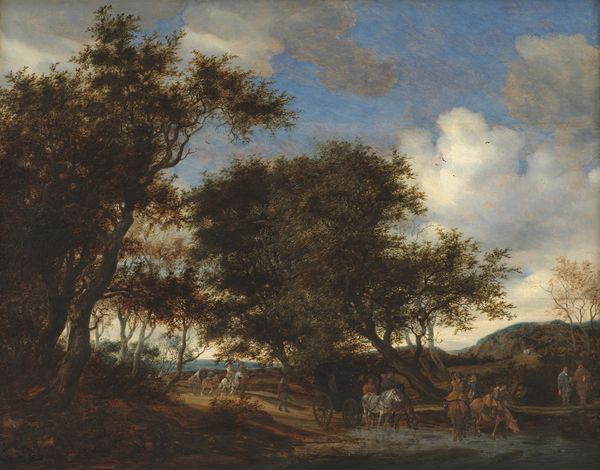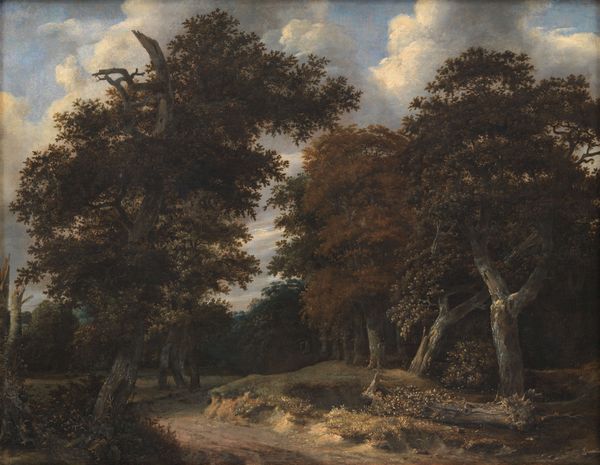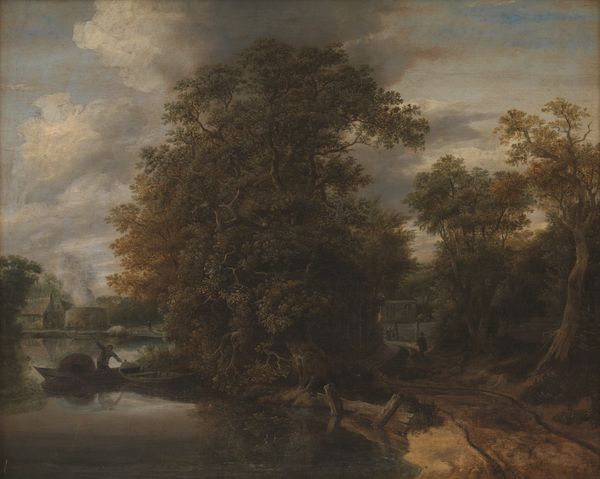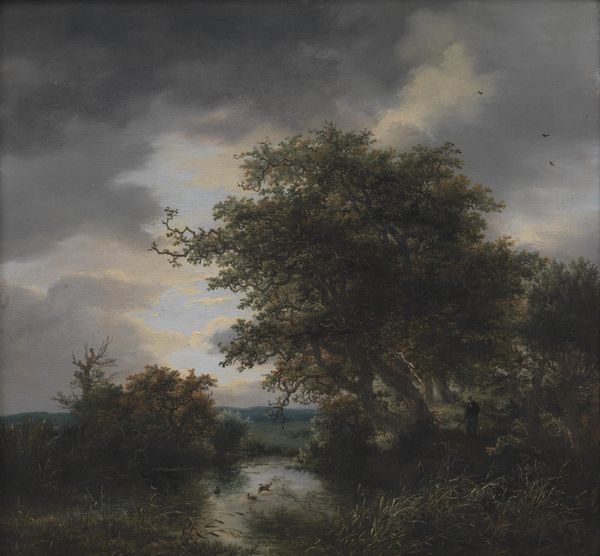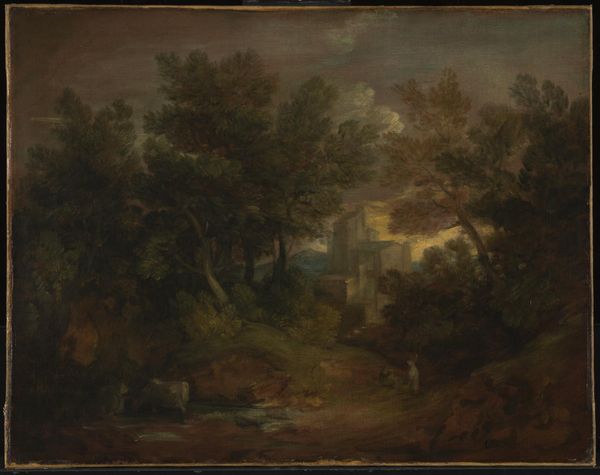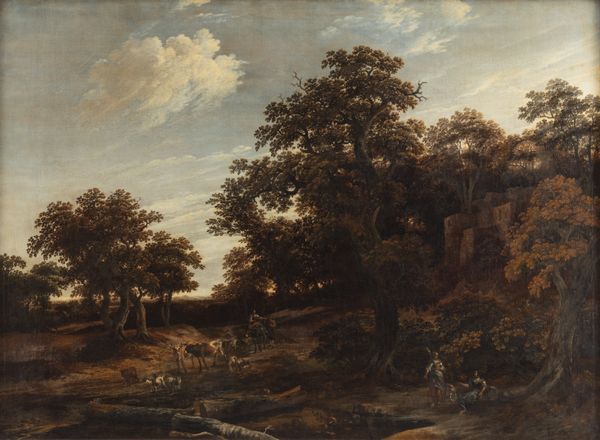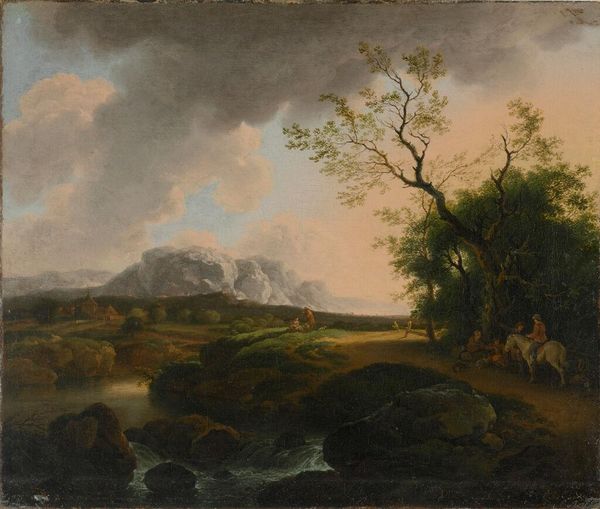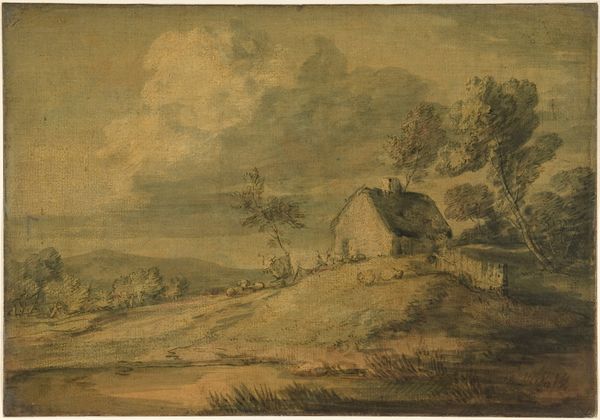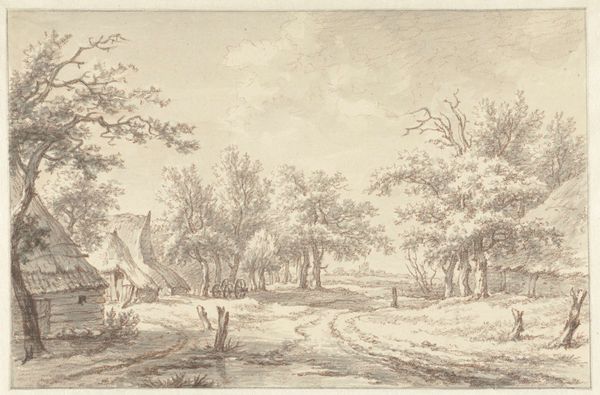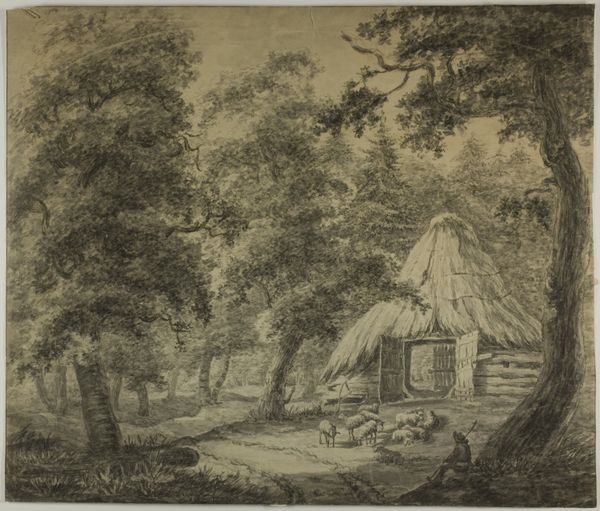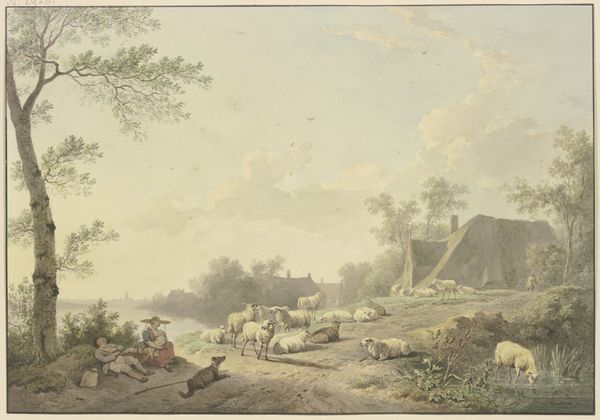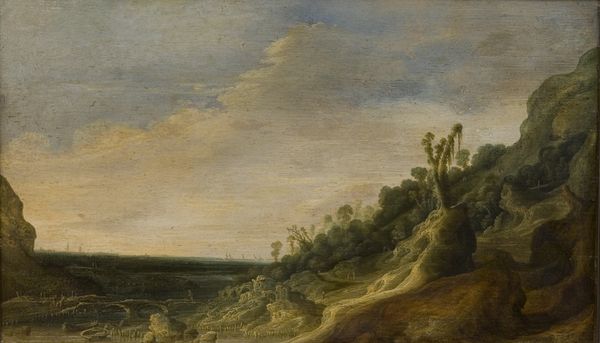
painting, oil-paint
#
baroque
#
dutch-golden-age
#
painting
#
oil-paint
#
landscape
#
house
#
genre-painting
#
realism
Dimensions: 29 1/2 x 43 3/8 in. (74.9 x 110.2 cm)
Copyright: Public Domain
Editor: We're looking at Meyndert Hobbema’s "Entrance to a Village," painted sometime between 1660 and 1670. It’s an oil painting currently housed at the Met. There's something so comforting and familiar about it, even though it’s from so long ago. What captures your attention when you look at this piece? Curator: Comfort, yes! It's a beautiful piece of nostalgia. The trees almost create a stage for this humble scene, don’t they? And that path, curving just so... it pulls you into the heart of the village, into a life lived at a gentler pace. Notice the church spire. Do you think its prominent placement adds to that feeling? Editor: Definitely. It’s like a landmark, suggesting a sense of community and shared values. Curator: Exactly! And look how Hobbema uses light—not dramatically, but subtly, to highlight certain areas, like the roofs of the houses. It's so delicately rendered. It’s almost as if he's not just showing us a place, but inviting us to dream a bit about that time and place, warts and all. Editor: It’s incredible how much feeling he can evoke with such seemingly simple subject matter. What do you think his motivation was? Was he making some sort of cultural or societal statement? Curator: I think that’s always the question with these seemingly ‘simple’ scenes, isn't it? But maybe sometimes, it's just a loving portrait. Maybe Hobbema simply adored the Dutch countryside. And what's so bad with celebrating everyday life? Editor: That's a good reminder not to overcomplicate things sometimes. I guess he just captured what he saw and what he felt. Curator: Precisely. Art isn’t always about grand pronouncements; sometimes, it’s about capturing a feeling, a fleeting moment. And he did so wonderfully!
Comments
No comments
Be the first to comment and join the conversation on the ultimate creative platform.
